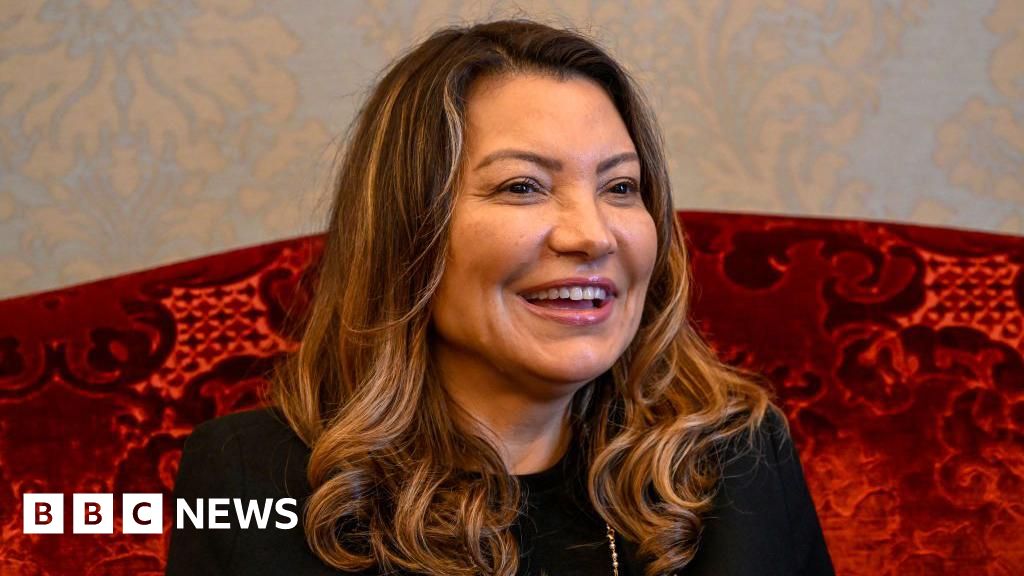ARTICLE AD BOX
By Arunoday Mukharji
BBC News, Delhi
Image source, Getty Images
Image caption,More than 18,000 Indian students were studying medicine in Ukraine before the war began
Sooraj Kumar is back with his family in Babuapur village in the central Indian state of Uttar Pradesh.
The 26-year-old was one of the more than 18,000 Indian students studying medicine in Ukraine who were evacuated after the war began. Mr Kumar was in a medical school in Uzhhorod for the past six years and would have qualified as a doctor in three months.
Mr Kumar now stares at an uncertain future - he is unable to continue his studies or find a place in Indian colleges.
The dream of becoming a doctor for thousands of young Indians begins from small towns and villages. But aspirants have always far outnumbered the vacancies available at affordable government-run colleges. Private medical colleges are accessible to only those who can afford very high fees.
In 2021, over 1.5 million students appeared for qualifying exams to government colleges, but less than 6% managed to get admission.
According to Public Health Foundation of India, a think tank, only one out of every 11 candidates in 2014 got into medical colleges. Last year, the number had increased to one out of every 19 candidates.
'Dismal results'
"So you have an increase in the number of people wanting to be admitted, but the seats did not rise proportionately. As a result a large number of students start looking for outside avenues" says president of the foundation, K Srinath Reddy.
A farmer's son, Mr Kumar was studying to be the first doctor not just in the family, but in his entire village.
Since he could not get admission in a government college, heading to Ukraine was the next affordable option.
"I would have had to pay nearly $150,000 (£113,000) in a private Indian medical college, but in Ukraine it cost me around $30,000 for the entire six-year course. [Still] I took a huge loan and my father had to sell some of our ancestral land [to fund my studies]" Mr Kumar said.
For medical students with a foreign degree, there is one final hurdle - clearing a qualifying exam to practice in India.
"The percentage of success in these exams have been fairly dismal" says Dr Reddy. "Between 2015 and 2018, the pass percentage was only 19%. In 2019, it went up to 25% but it came down to 16% in 2020".
Image source, Swati Sagarika Sabat
Image caption,Swati Sagarika Sabat has been attending online classes organised by her university on her phone
He said the teaching system abroad "didn't adequately prepare" students to Indian medical practices.
Now as students return from Ukraine, leaving their studies mid-way, there is uncertainty. "I worry, without a degree, I can't take the qualifying examination in India. How do I even fill out my application if I don't have a degree?" Mr Kumar laments.
It's a reality that 22-year old medical student Swati Sagarika Sabat is still coming to terms with. She's back home in Kendrapara city in the eastern state of Odisha, struggling to learn medicine over a Zoom class her university in Ukraine has organised.
"We are not sitting with our teachers or seeing patients. How can anyone learn how to perform a surgery online? We can't learn without getting any practical experience," says Ms Sabat.
Shortage of doctors
Some feel the government should allow the students from Ukraine to be accommodated in local medical colleges. The government has said it is looking into their matter.
But what is essential is improving the existing infrastructure in India so that students have more choices in the country instead of having to go abroad.
In the last seven years, the number of medical seats in Indian colleges has gone up from around 52,000 to nearly 89,000. This is a substantial rise, but still not enough. With one doctor for every 1,500 people, India desperately need more medical professionals
The government is looking to set up hospitals in districts, especially in rural areas. The upgraded district hospitals will have medical colleges attached to them.
"By using district hospitals as a training area, you are actually also creating a cultural shift. You are making them much more responsive to the needs of the community," says Dr Reddy.
You may also be interested in:
Watch: Indian students on the trauma of escaping Ukraine's war

 2 years ago
99
2 years ago
99








 English (US)
English (US)